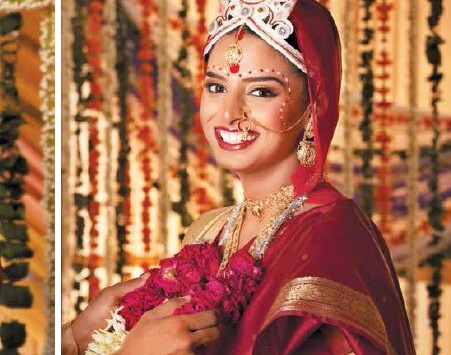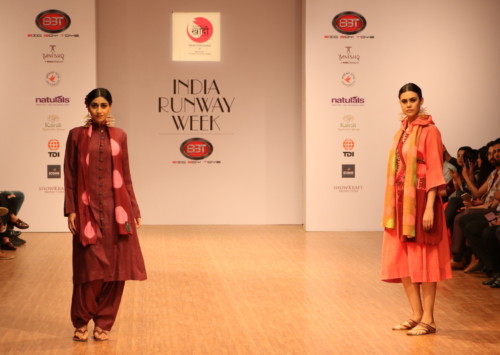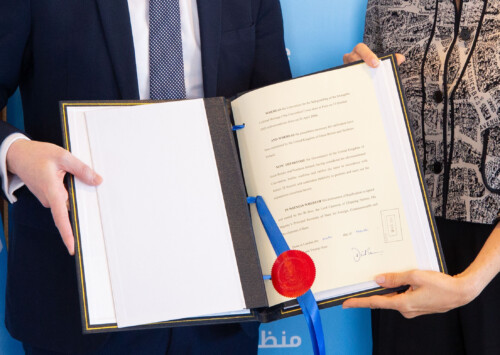Bandhani, made in Gujarat
It’s one of the most cherished and adorned textile arts. It’s been a part of Gujarati culture since times immemorial and has now come to be synonymous to the fashion associated with this state of India. After spreading its wings across the country and finding place in wardrobes of women from varied cultures and communities, bandhani is now ready to fly international.
Almost every city in the westernmost state of Gujarat has an art form native to it and its people. And these art forms are not just restricted to metallurgy or wooden crafts but are also cut as silhouettes and draped as patterns. Artistically made using various techniques to form designs and patterns, the many styles are all different from one another and some more popular than the other. Born in Gujarati districts of Kutch, Jamnagar, Surendranagar, and Anand, bandhani or bandhej is crossing fashion barriers and entering a global market, credit to its simple, subtle and interesting designs.
Of the many tie-and-dye and weaving patterns that are made on various fabrics, the bandhani is one of the most popular cloth-art forms. These colourful fabrics, flecked with tiny white-coloured square dots, arranged in different patterns are reminiscent of Gujarati textile art. Although bandhani is adorned by many people across India, it is rooted deeply in Gujarati culture.
A mark of girlhood, love and marital happiness, bandhani forms an important part of the materials collected by a bride-to-be as part of her wedding trousseau. “In Gujarati culture, each and every girl buys a bandhani when she gets married,” says Dewangi Marthak, who runs Jagdish Cotton World, a retail outlet in Rajkot. “Most of the times, a bandhani saree is passed down through generations. A mother would give it to her daughter and the daughter will further pass it onto her daughter,” she explains.
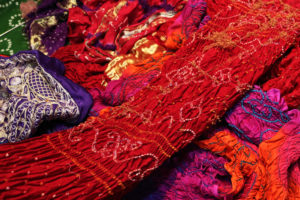
The red bandhani saree made of gajji silk is traditionally meant to be adorned by brides in Gujarat.
The bandhani saree used for weddings is different in style from other tailormade tie-and-dye garments. Made using an improvised version of silk called the gajji silk, the sarees are usually deep-red in colour with a lagdi pato or a golden border on all sides. Soft in texture and royal in look, the bandhani on gajji silk makes for a glorious adornment.
Other fabrics like cottons, pure silks and more recently and experimentally, georgette and chiffon are being used to make the tie-and-dye patterns of bandhani. Other than sarees, these designs are created for shirts, kurtis, lehngas, slawars, dhotis and other Indian garments. “There are many forms in which bandhanis are worn these days. They are also worn like lehngas in weddings and as short kurtis or dhotis by boys during the traditional garba dances,” Marthak explains.
Meticulously crafted, these garment patterns are all similar yet very different in style and design from each other.
The craft of bandhej
The resist technique of tie-and-dye derives its name from the Sanskrit word bandhana, literally tying together. Pinch-size portions of fabrics are tied together using a special thread used only for bandhanis. After an entire piece of fabric is tied together in various pinches, it is dyed colourfully. These pinches are then opened leaving white or grey blocks wherever the fabric was pinched and tied together. A thing to keep in mind while undoing the knots or pinches is that they should be opened in a criss-cross manner in order to prevent the fabric from tearing.
The fabrics are dyed differently using natural and artificial colours depending from article to article. Naphtol and vat colours which are sun-fast and fit for washing with detergents are more commonly used these days. Silks are generally dyed in acid colours which are now readily available in India as most of the dyes are now being manufactured here. Although readily available across various cities in Gujarat, the usage of natural and artificial colours may vary geographically.
“Natural colours are not commonly used in this part of the country, their usage is more common in Kutch,” says Marthak while talking about the colours craftsmen use in the city of Ahmedabad.
The technique of bandhani however remains the same. A range of patterns including geometric, floral, abstract et al is made using this method, which makes white-blocks stand out on bright coloured cloths, adding a texture to the fabric which can be both felt and seen. The detailed designs are carefully made so that when the knots are opened, the white-boxes are in harmony with each other.
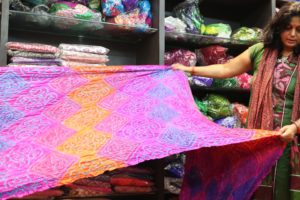
Long into the business of bandhani, Marthak explaining about the intricate, pinch-sized patterns on the fabric.
“The designs are intricately done by women of Saurashtra, particularly because they are into this business. It’s a traditional business learnt from a person by another within a family; a mother teaches her daughter and so on and so forth,” says Marthak.
“But, now the traditional business is in a critical state as not many women are learning it due to other educational opportunities; girls are going out, working in other allied agencies, and no more like doing this as it is a very tedious job,” Marthak says while explaining the current situation of the craft and craftsmen in the region.
The fabric flying to places
While some locals are drifting away from learning the craft, the art product is gaining more and more popularity across India and abroad.
“Especially during December, foreigners pour into our shop to buy traditional silks and cottons. They buy silks mostly. People from Japan, Europe, the US, the UK all show interest in cottons but prefer shopping for silks,” Marthak informs.
“The colourful and bright bandhanis are hot-selling, as people know about it more than other textile arts,” Marthak adds.
In fact, traditionally crafted by artisans from the khatri community and women in Saurashtra, the profession is now being adopted by craftsmen across various sects and men and women all over.
Adorned by many Indian women in their day-to-day life, silk and cotton bandhanis are a quintessential part of most Gujarati women’s wardrobe. However, instead of pure silk or gajji silk, they adorn gadwal silks for leading a routine.
Not only is the fabric selected according to the hour’s need, the bandhani patterns or designs too are. The white-coloured boxes may be set in more forms than just plain floral or geometrical. Themes around nature, rituals, festivals are created by the expert hands of the artisans who spend days on a single fabric. At times, these patterns are also given names which are based on the theme they represent. Some such names are Ambadal, Chandrakukdi, Kalger and Shikari.
One of the oldest forms of surface art-works done on textiles, Bandhani also has its mention in some old Indian scriptures and manuscripts. Women from various communities and religions, especially in north and north-western India, adorn the art-cloth.
In Gujarat, where the art form originated, women of certain communities wear colours and patterns denoting the individuality of the ethic group they come from. In areas, far from cities and mostly untouched by contemporary fashion and modern styles, a woman can be easily recognised or identified as the member of a community by the kind of bandhani and associated textile attire she is wearing.

